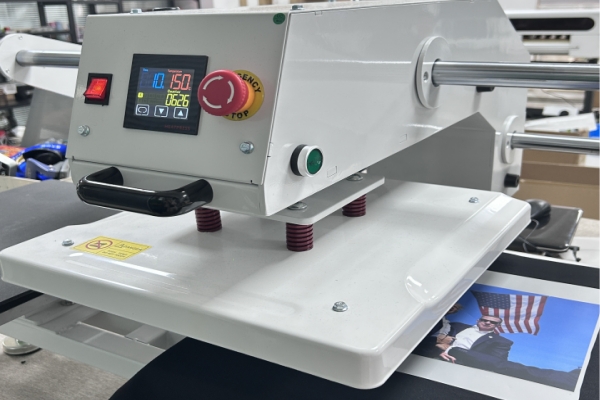10
Oct

The DTF heat transfer process has revolutionized the textile decoration industry. Especially in the apparel industry, it can bring fine and rich patterns, true colors and high quality prints to the products. However, with the popularity of DTF technology, some misconceptions have emerged.
A question we hear frequently when greeting new customers is, “Is it possible to iron a DTF pattern directly onto fabric with a household iron?” Admittedly, it's not technically impossible. But the real question to ponder is: “Do the benefits outweigh the disadvantages? Or vice versa?
While pursuing efficiency and convenience, we should pay more attention to how to ensure the perfect presentation and long durability of DTF printing. Next, let's have an in-depth comparison.
DTF heat transfer is a new and efficient printing process. It uses DTF special ink, hot melt powder and DTF PET film to complete the printing of high-resolution images. It transfers by using heat and pressure to melt the hot melt powder, allowing the pattern to be firmly bonded to the fabric. It can be washed more than 50 times and still does not lose its color and fall off.
So, can an iron make it to such durability??
- Iron: Iron is limited by the operation and manual control, it is difficult to realize the fine pressure management, easy to transfer the uneven bonding condition.
- Press: With its powerful mechanics, the professional press machine applies even and consistent pressure across the entire transfer area, ensuring that every detail of the hot stamping pattern fits tightly to the fabric, avoiding the risk of peeling or cracking.
- Iron: The iron's temperature control is relatively crude, influenced by operator experience and environmental factors, and can easily result in inconsistent transfer quality.
- Press: The press machine is equipped with an advanced temperature control system that can accurately set and maintain the optimal transfer temperature to optimize the bonding effect of ink and fabric.
- Ironing: If ironing is not done properly, the heat transfer may fade and peel after a few washes, destroying the beauty and wearability of the textiles and seriously affecting the user experience.
- Heat Pressing: The DTF heat transfer pattern completed with professional heat press can withstand dozens of washings without fading or peeling off, maintaining the beauty and durability of the finished product.
.jpg)
Choosing to use an iron instead of a professional heat press for DTF heat transfers may seem like a time and cost savings, but it can actually have a number of serious negative consequences.
Unsatisfied customers: A non-durable heat transfer product will result in unhappy customers and negative reviews.
Reduced profit margins: You will end up spending more time and energy on customer returns and exchanges.
Brand damage: Your brand reputation will be damaged, affecting long-term growth and profitability.
We believes that excellent quality is the cornerstone of all successful businesses, especially in the highly competitive textile decoration sector. We recommend that you use a professional heat transfer press to ensure that your heat transfer products meet high standards of durability, vibrancy and overall quality.
While it is tempting to take shortcuts in the name of efficiency or cost savings, the risks of using an iron for DTF heat transfers far outweigh the benefits.
DTF heat transfer technology has a bright future and unlimited possibilities, and we should invest in the right tools and workflows.
Drop us an email and let's make great things happen: info@textek.com
Contact us through WhatsApp and let's talk furthermore: +8619137185989
